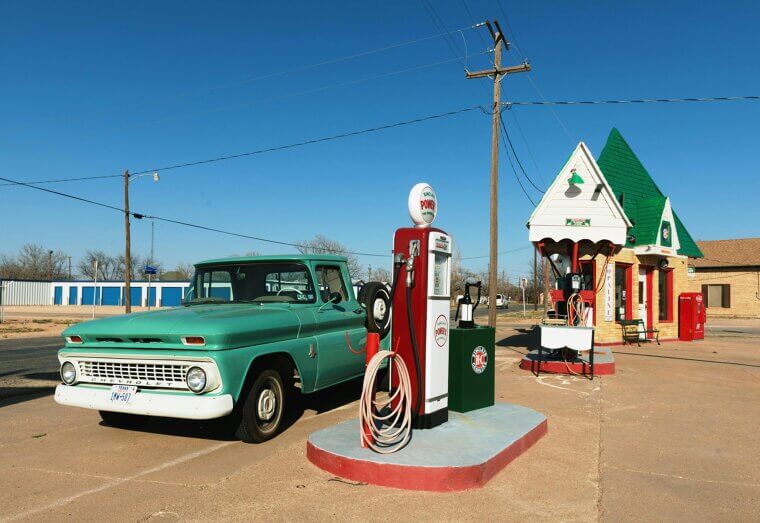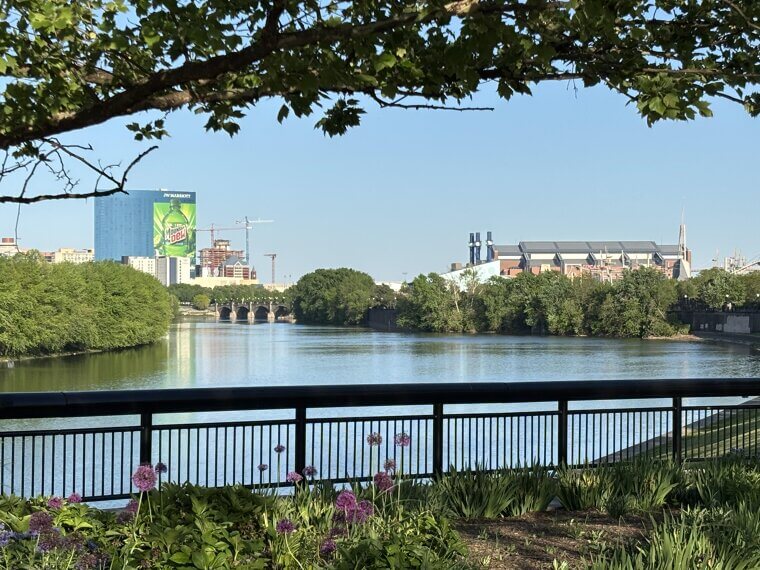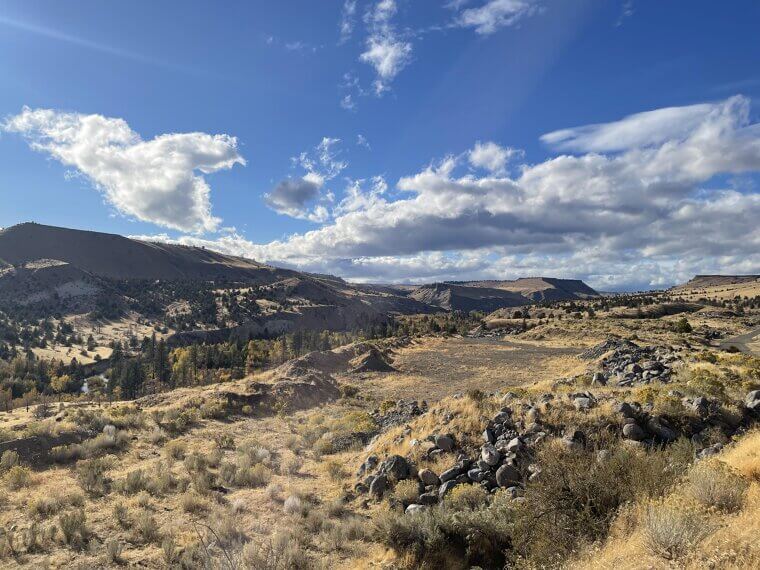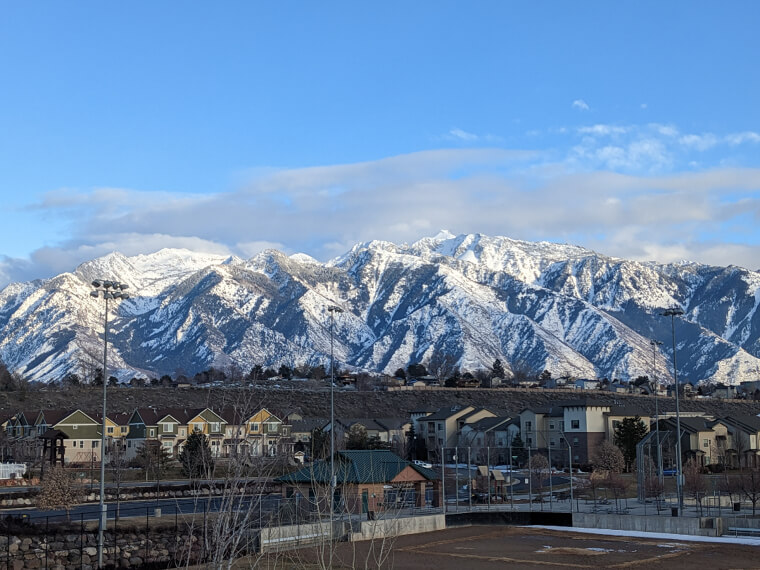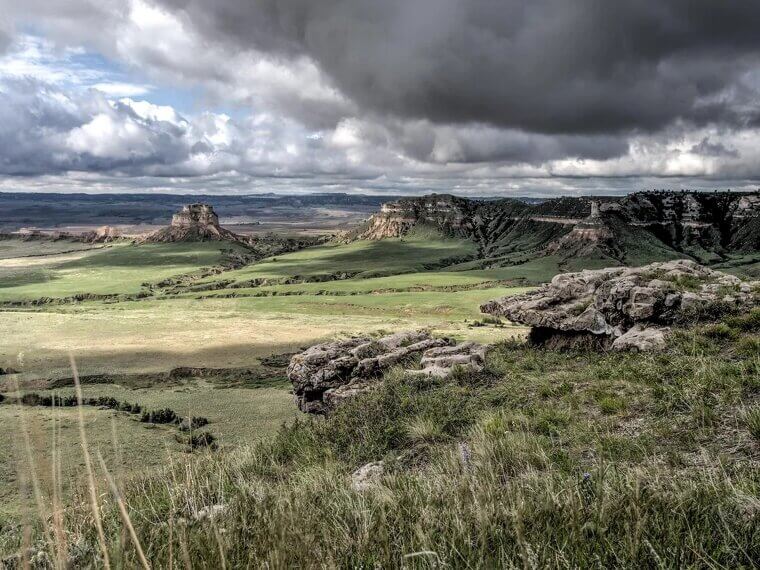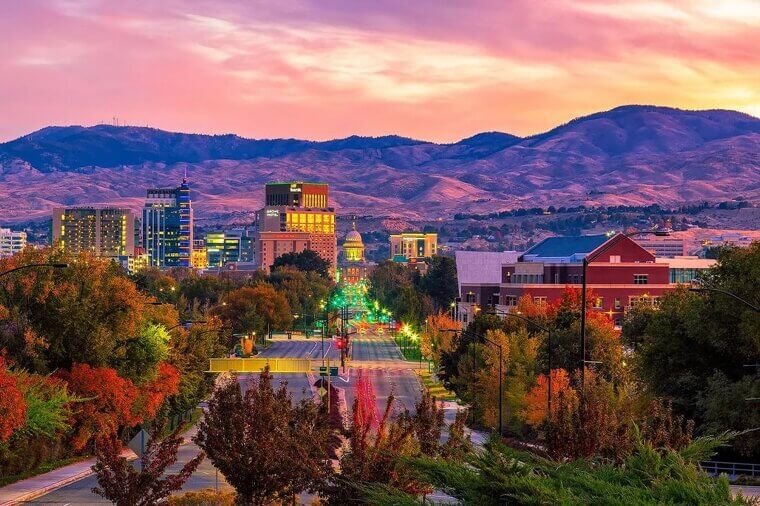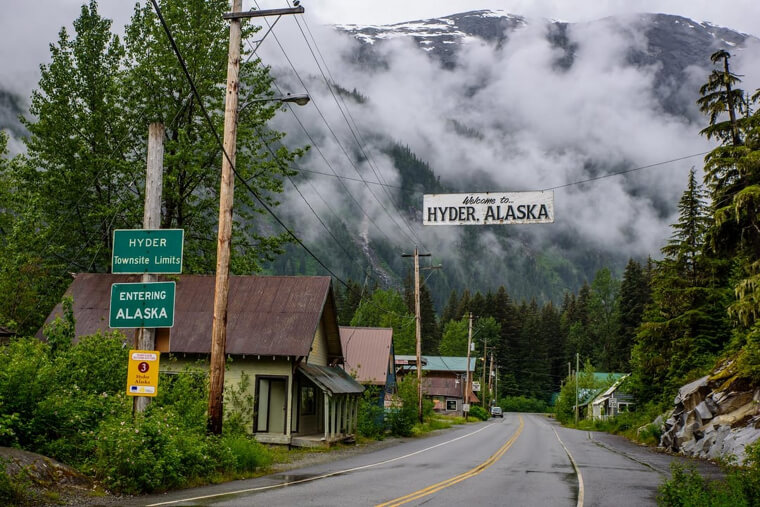Each State Has Different Gas Consumption
Gas consumption rates can be difficult to measure for a country like the United States, which comprises several smaller and very distinctive territories. As such, it’s much easier to get a grasp on things if we take it one state at a time, starting with…
Texas
Winning the title of “Biggest Gas-Guzzler” by a surprisingly small margin is the one and only Lone Star State. We’re talking about Texas, of course, which accounts for approximately 15% of all gas consumption in the United States. Most of that can be attributed to the industrial sector, with commercial and vehicle usage seeing comparatively lower shares.
California
Following close in Texas’ footsteps is none other than the Golden State, California. Like Texas, most of the gas consumption in Cali can be attributed to the industrial sector, though residential gas consumption does tend to spike during the winter months when heating becomes a priority.
Florida
The Sunshine State takes home the bronze medal in terms of gas consumption, though we’re already leagues behind the two trendsetters at the forefront. Most of Florida’s gas usage comes from the state’s reliance on gas-powered plants to generate electricity, with industrial and residential sectors being mostly even in terms of gas consumption.
New York
For a place that seems to never not be absolutely congested with traffic, gas consumption in New York is - surprisingly - largely dominated by the residential sector, accounting for roughly 38% of all gas usage in the state. Vehicle fuel, on the other hand, is decidedly minimal.
North Carolina
The state of North Carolina has no local gas production of its own, relying entirely on pipelines from other states. And where does this gas go, you ask? Electricity, baby. Around 63% of North Carolina’s total gas usage goes towards electricity generation, with expected peaks during the winter and summer months.
Ohio
In the Buckeye State, electricity accounts for around 58% of all gas consumption, which has fairly recently overtaken coal as the state’s primary source of energy. Industrial and residential margins are decidedly slim, besides the expected seasonal spikes in usage around winter and summer.
Georgia
In Georgia, gas usage peaked at 132 Bcf residential and 155 Bcf industrial in 2024. Most of the state’s electricity generation relies on gas, accounting for around 41% of all gas usage, with utilities like Atlanta Gas Light serving a whopping 1.6 million customers. Surprising no one, usage tends to spike during winter and summer.
Pennsylvania
Despite ranking eighth on this list, we wouldn’t be surprised to see Pennsylvania climb the ratings even further. Usage of gas in the state has doubled since 2013, with electricity taking up roughly 57% of all gas usage. Residential and commercial use has been relatively stable, with vehicle fuel being almost negligible.
Michigan
Despite being the home of automotive excellence, most of Michigan’s gas usage goes towards electricity, with the residential sector accounting for around 285 Bcf of gas in 2023. In contrast, the industrial sector only used around 163 Bcf that same year and vehicle fuel has remained minimal.
Illinois
Illinois’ infrastructure surrounding natural gas is extensive, with a widespread network of pipelines and storage solutions. The residential sector accounts for most of the state’s gas consumption, with the industrial sector not too far behind at 261 Bcf in 2023. The electric power sector only accounted for 208 Bcf that same year.
Virginia
Following similar patterns as such states as Michigan and Pennsylvania, most gas consumption in Virginia can be attributed to its electrical infrastructure (around 59%), with the industrial (18%) and residential sectors (12%) coming in second and third, respectively.
New Jersey
New York’s better, less hellish neighbor, New Jersey, comes in twelfth in terms of gas consumption across the entirety of the United States. Most of their gas usage goes towards electricity, accounting for around 50% of total use, with commercial and industrial sectors only accounting for a much smaller amount.
Tennessee
Only a very small amount of gas in Tennessee is actually produced in the state. Tennessee primarily relies on pipelines from neighboring areas, with most gas going towards fueling the state’s bustling industrial sector (around 39%), followed by electric power (29%), and residential and commercial (17% and 14%, respectively).
Alabama
Like Tennessee, most of the gas in Alabama is sourced from other areas, but unlike that state, electrical power plants vastly dominate its use (sitting at around 62%). In contrast, residential and commercial sectors only account for a measly fraction of the state’s total gas consumption and, due to mild summers and winters, aren’t prone to spiking during seasonal changes.
Missouri
In contrast to many of the states previously listed, electricity in Missouri is primarily powered by coal and only accounts for 15% of gas consumption in the region. That said, the state still uses around 307 Bcf of gas annually, with at least 90 Bcf of that going towards powering households.
Indiana
In the Hoosier State, industrial demands lead in terms of gas consumption per sector, eating up around 402 Bcf worth of gas. In contrast, the residential sector only accounted for around 20% of the state’s total gas consumption, while electric power usage in the region remains below average.
Arizona
In contrast to Indiana, electric power vastly dominates Arizona’s total gas consumption rates, accounting for a whopping 420 Bcf out of a total 505 Bcf (in 2023, at least). Industrial, commercial, and residential sectors, meanwhile, only take up around 80 Bcf in total.
South Carolina
South Carolina relies entirely on pipelines and modest storage solutions for all their gas needs. Most of this is directed towards power plants, which make up around 55% of all gas usage in the region. Home and businesses only account for 9% and 7%, respectively, while industrial demands make up the remaining 28%.
Wisconsin
America’s Dairyland delivered around 524 Bcf to residential, commercial, industrial, and electrical sectors in 2024. The residential sector tends to peak during the winter months before falling off significantly by the following March. Electricity still accounts for most of the state’s gas consumption (around 37%).
Washington
With no gas-producing infrastructure of their own, Washington primarily relies on pipelines from Canada to fulfill their gas needs (though hydro power still remains prominent). Electrical power plants account for around 20% of the state’s total gas consumption.
Massachusetts
Massachusetts, like many other states listed here, doesn’t produce any gas of its own. The gas it receives via pipelines is used to power the state’s many electrical plants, accounting for 40% of total gas consumption throughout the entire state.
Maryland
Out of 263 Bcf delivered to the state in 2023, most of Maryland’s gas consumption can be attributed to its electrical infrastructure, accounting for roughly 41%. As is the case for many states, residential use tends to peak during winter months for heating purposes before eventually plateauing once summer rolls around.
Minnesota
In the land of the North Star, industry tends to dominate the state’s gas consumption rates, with the residential sector following close behind. Roughly two-thirds of all homes in Minnesota rely on gas for heating, and consumption rates spike drastically during the winter months.
Colorado
The state of Colorado is seeing a gradual but notable shift toward solar and wind power sources. That said, gas is still vital for most of the state’s infrastructure at the time of writing, with the residential sector accounting for the bulk of all gas consumption, followed by industrial and commercial sectors.
Louisiana
Louisiana is one of the few states on this list so far to have their own means of local gas production. Gas powers roughly 71% of the state’s electrical infrastructure, but the biggest guzzler - by far - is the industrial sector, which consumed 1.17 Tcf in 2023 alone.
Kentucky
In the Bluegrass State, coal is the primary source of energy for the state’s electrical grid. Still, Kentucky uses its fair share of gas, particularly in the industrial sector, which has a pretty significant lead over other sectors. The residential sector is mostly seeing a downward trend in terms of gas consumption.
Oklahoma
In Oklahoma, the majority of the state’s total gas consumption is almost evenly split between the electrical and industrial sectors, consuming 384 Bcf and 224 Bcf, respectively, out of a total of 682 Bcf. In contrast, the state’s residential sector only uses around 50 Bcf annually.
Mississippi
In 2023, Mississippi saw a slight decrease in gas consumption, from 143 Bcf in 2022 to 137 Bcf. Most of that is used to power the state’s electrical infrastructure, especially since gas accounts for roughly 77% of all power in the state. Industrial and residential sectors are comparatively modest in their gas usage.
Iowa
Iowa follows similar trends to many other states in terms of which sectors dominate gas consumption rates. Here, the industrial sector clears all others, with residential use marginally spiking during winter months before subsiding again as soon as the cold passes.
Arkansas
Like many other states, Arkansas primarily relies on pipelines to secure its gas, most of which is devoted to the state’s electrical power plants. Industrial and residential use, meanwhile, tends to be much lower, and the state - as a whole - definitely doesn’t consume nearly as much gas per year as many of the other ones featured on this list previously.
Oregon
We’re definitely towards the lower end of the gas consumption scale by this point in our list. In 2023, Oregon consumed roughly 160 Bcf, which is quite a difference from the likes of Texas and California. Power plants account for roughly 50 Bcf, with the residential sector close behind at 45 Bcf.
Connecticut
Connecticut represents what seems to be the standard for gas consumption across the United States. That is to say, most gas usage in Connecticut can be attributed to the electrical sector, accounting for roughly 40%, with industrial and residential sectors maintaining an even balance between one another.
Kansas
As a fairly windy state, it makes sense that Kansas is moving towards more active solar and wind energy sources. That said, gas is still an important resource there, with electrical power plants making the most use of the stuff at 45%. The residential sector accounts for another 20% to 30%.
Utah
In the state of Utah, most electricity is powered by coal, with renewable energy sources slowly gaining prominence. That said, gas is still responsible for powering roughly 35% of electrical plants in the area while also being crucial for the residential sector, which tends to peak during the winter months.
Nevada
Despite being one of the brightest places in the world, thanks to its abundant light fixtures, gas consumption in Nevada is moderately low in comparison to many other states. That’s mostly due to the fact that coal and hydropower are also used just as prominently, with gas accounting for around 54% of the state’s power needs.
New Mexico
In New Mexico, gas consumption saw a drop of nearly 21% in 2023. Despite this, the state is one of the United State’s largest gas suppliers, accounting for roughly 10% of the total production in the country. That said, coal and renewable energy sources generate most of the state’s power.
Nebraska
Unlike many other states on this list, Nebraska’s gas consumption isn’t dominated by electrical power plants. Instead, the majority of gas in the region is used to power industrial factories, accounting for roughly 53% of total usage, with electricity actually ranking the lowest.
Idaho
Idaho is perhaps one of the most prominent states to make use of a variety of different energy sources, namely wind, hydro, and solar. Still, gas has its place, supplying around 31% of all electricity within the state. The industrial and commercial sectors use small amounts, with the majority going towards the residential sector, especially during winter.
West Virginia
Considering that West Virginia used to be America’s coal capital, it makes sense that the majority of electricity in the state is still generated through the use of coal. Gas contributes a measly 8% but is still used prominently in the industrial and residential sectors.
New Hampshire
Of the measly 57.6 Bcf delivered to New Hampshire, the majority (around 30.8 Bcf) went to electricity power plants. The rest was doled out fairly evenly amongst residential, commercial, and industrial sectors, but the state as a whole is shifting towards other forms of power.
Maine
Despite being a relatively modest gas-guzzler when compared to many of the other states on this list, Maine has seen an increase in gas usage, with natural gases now accounting for around 25% of the state’s power supply.
Montana
Despite supplying almost no gas to the rest of the United States, Montana does have the largest underground gas storage facility, located in the Williston Basin. Commercial and industrial sectors make up the majority of gas consumers in the state.
South Dakota
South Dakota is yet another state with no local gas production facilities of their own. Their overall gas consumption is, at least, fairly modest, and most gas usage in the state is directed towards the industrial sector.
Delaware
Gas is pretty much crucial to Delaware’s (continued?) prosperity, accounting for a staggering 92% of the state’s total power supply. Most of this is directed towards the industrial sector, but despite the state’s strong reliance on gas, it produces none of its own.
North Dakota
Unlike Delaware, North Dakota is a major gas producer in the United States, though their output often goes well beyond its capacity to safely store it. Most gas usage in the region can be attributed to the state’s industrial sector, though residential use does spike during winter.
Hawaii
We’re making our way towards the end of our list now, with most of the states here on outranking extremely low in terms of gas usage. In Hawaii, the commercial sector makes up the majority of gas usage in the region, accounting for a whopping 77%. In contrast, the state’s industrial sector only makes up 3%.
Rhode Island
Like Delaware, Rhode Island pretty much exclusively relies on gas to power the state, where gas accounts for around 92% of all power. Electric power, therefore, is the largest gas consumer in the region, followed by the commercial and residential sectors.
Wyoming
Wyoming is a major producer and supplier of gas for other states in the country, but their own gas consumption rates are decidedly minimal, with the majority being attributed to the state’s industrial sector (around 60%).
Vermont
Vermont only recorded a measly 12.5 Bcf of gas in 2023, a number that was more or less evenly distributed between the state’s industrial, residential, and commercial sectors.
Alaska
Finally, Alaska is by far the United States’ lowest gas consumer, despite also being one of the country’s largest gas producers. However, due to a lack of infrastructure, most of that gas is reinjected into oil reservoirs in order to keep crude oil production rates up.

